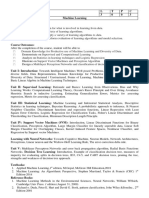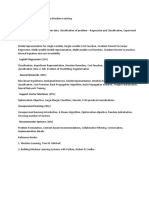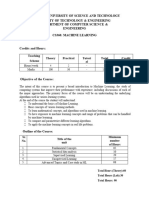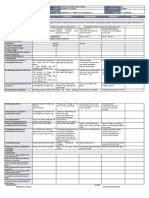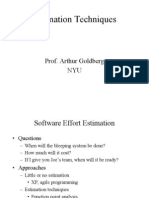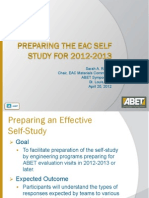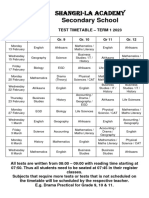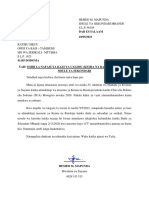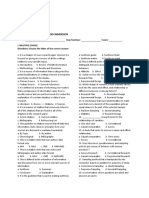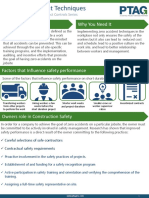L T P C
I Year - II Semester
3 0 0 3
Machine Learning
Course Objectives:
Machine Learning course will
Develop an appreciation for what is involved in learning from data.
Demonstrate a wide variety of learning algorithms.
Demonstrate how to apply a variety of learning algorithms to data.
Demonstrate how to perform evaluation of learning algorithms and model selection.
Course Outcomes:
After the completion of the course, student will be able to
CO 1. Summarize the concepts and methods related to machine learning such as classification, regression,
clustering, bias/variance, kernel functions, and optimization.
CO 2. Predict the expected outcome of the problem based on the training data by applying specific
machine learning algorithm.
CO 3. Implement and compare the relevant algorithms using performance metrics.
CO 4. Design and build the model using various machine learning algorithms in a range of real-world
applications.
Unit I: Introduction: Towards Intelligent Machines Well posed Problems, Example of Applications in
diverse fields, Data Representation, Domain Knowledge for Productive use of Machine Learning,
Diversity of Data: Structured / Unstructured, Forms of Learning, Machine Learning and Data Mining,
Basic Linear Algebra in Machine Learning Techniques.
Unit II: Supervised Learning: Rationale and Basics: Learning from Observations, Bias and Why
Learning Works: Computational Learning Theory, Occam's Razor Principle and Over fitting Avoidance
Heuristic Search in inductive Learning, Estimating Generalization Errors, Metrics for assessing
regression, Metris for assessing classification.
Unit III: Statistical Learning: Machine Learning and Inferential Statistical Analysis, Descriptive
Statistics in learning techniques, Bayesian Reasoning: A probabilistic approach to inference, K-Nearest
Neighbor Classifier. Discriminant functions and regression functions, Linear Regression with Least
Square Error Criterion, Logistic Regression for Classification Tasks, Fisher's Linear Discriminant and
Thresholding for Classification, Minimum Description Length Principle.
Unit IV: Support Vector Machines (SVM): Introduction, Linear Discriminant Functions for Binary
Classification, Perceptron Algorithm, Large Margin Classifier for linearly seperable data, Linear Soft
Margin Classifier for Overlapping Classes, Kernel Induced Feature Spaces, Nonlinear Classifier, and
Regression by Support vector Machines.
Learning with Neural Networks: Towards Cognitive Machine, Neuron Models, Network Architectures,
Perceptrons, Linear neuron and the Widrow-Hoff Learning Rule, The error correction delta rule.
Unit V: Multilayer Perceptron Networks and error back propagation algorithm, Radial Basis Functions
Networks. Decision Tree Learning: Introduction, Example of classification decision tree, measures of
impurity for evaluating splits in decision trees, ID3, C4.5, and CART decision trees, pruning the tree,
strengths and weakness of decision tree approach.
�Textbooks:
1. Applied Machine Learning,1st edition, M.Gopal, McGraw Hill Education,2018
2. Machine Learning: An Algorithmic Perspective, Stephen Marsland, Taylor & Francis (CRC) 1 st
Edition-2014
Reference Books:
1. Machine Learning Methods in the Environmental Sciences, Neural Networks, William WHsieh,
Cambridge Univ Press. 1 edition (August 31, 2009)
2. Richard o. Duda, Peter E. Hart and David G. Stork, pattern classification, John Wiley &SonsInc., 2 nd
Edition-2001
3. Chris Bishop, Neural Networks for Pattern Recognition, Oxford University Press, 1995.
4. Machine Learning by Peter Flach , Cambridge-1st Edition 2012
